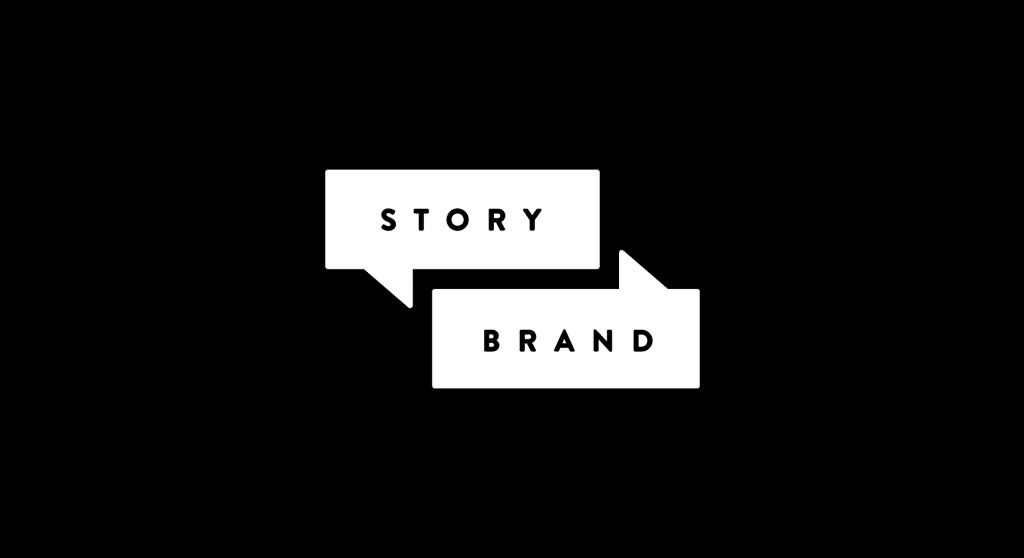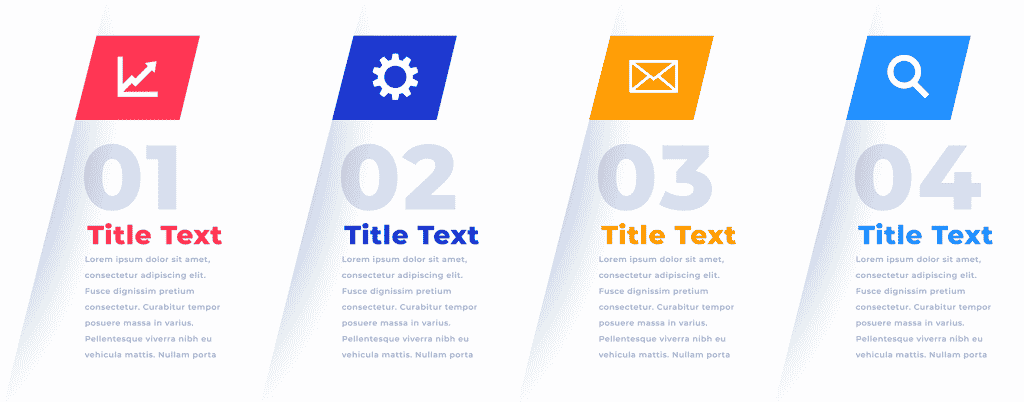Many business owners can relate to wasting tons of money on marketing that gets nothing but crickets. When this happens, doubts can set in on whether what you sell is good enough. But what if the problem isn’t what you’re selling but how you talk about it.
What you think you’re telling customers is usually different from what they actually hear. If your message is boring or confusing, they’ll leave. The reality is how you communicate in the marketplace determines whether your readers choose you or follow the competition.
By clarifying your marketing message, you can get your audience to sit up and pay attention. The StoryBrand framework is the secret weapon that will help you achieve this.
What is the StoryBrand framework?
Everyone loves a great story. Our brains are hardwired to prefer stories over facts. Stories hook our attention, maintain it, and keep us begging for more. The principles of great storytelling, when applied to your marketing, can command attention, engage more customers, and grow your business.

But how can you tell a brand story that people listen to? After spending long years of his life studying the elements of winning stories, Donald Miller came up with a framework that businesses can use to improve how they communicate.
If you’re wondering whether StoryBrand will work for your type of business, the good news is it does. Whether you’re a small establishment, personal brand, or multinational corporation, you can get results from applying the StoryBrand framework.
Let’s break down the 7 steps of the framework and see how it can transform your marketing.
The 7 Steps of the Storybrand Framework
Every great story follows a fundamental concept that’s simple to understand. The StoryBrand framework breaks down this concept into 7 plot points of messaging categories that make your brand more inviting to customers.
When applied, the framework will produce a clear and compelling brand story: where your customer is the hero, and you’re the guide that helps them overcome their challenges and achieve the life they desire.
Let’s go through them one by one.
1. A Character
Stories involve a Hero: the main character the audience loves and roots for. Applying the StoryBrand framework starts with identifying that your customer is the hero of the story you’re telling, not your brand.
People can tell when a brand doesn’t care about them. Positioning your brand as the hero automatically shifts focus from your audience to yourself, causing them to lose interest quickly.
To make your customers the hero, you need to start by defining your answers to the following questions:
- Who are my ideal customers?
- What do they want as it relates to my brand?
When you show customers you understand and can provide what they want, they’re drawn immediately to your story and listen.
2. Has a Problem
Heroes in a story have a problem they need to solve. The major reason why customers seek your business is that they’re dealing with a challenge or issue that’s making life difficult and stressful.
Most customers experience three levels of problems in their lives:
- External problems – These are physical or tangible issues your customers deal with.
- Internal problems – Refers to how your customers’ challenges make them feel. Do they feel frustrated, confused, anxious, or overwhelmed? Talk about it.
- Philosophical problems – Involves a deeper reason on why it’s wrong for your customers to face such problems.
What problem does your business prevent or solve? Can you define it clearly? Try to brainstorm answers to each problem category. Once you’re through, try to identify a common entity that’s the root cause of these problems and villainize it. Relating your customer’s problems to the solution you provide creates a desire for your product or service.
3. And Meets a Guide
Heroes can’t do it all by themselves. They need the help of a guide, think Yoda, that helps them win the day. Customers look up to you to help them overcome a challenge. You’re the guide in your brand story.
Positioning yourself as the guide requires that you demonstrate two things:
- Empathy – Show your customers you care. Talk about their problems. Let them see that you understand them.
- Authority – People need credible proof that you deliver results. Demonstrate your competence with proof elements like testimonials, awards you’ve won, or publications you’ve featured in.
Think of what makes you credible and discuss it in your marketing to establish trust with customers.
4. Who Gives Them a Plan
In classical movies, the mentor or guide trains the hero or provides an action plan that helps defeat the villain. Can you provide an action plan that helps customers conquer their problems?
Ideally, you want to spell out the process in 3 to 5 simple steps they can easily follow. This is to show that working with you isn’t complicated. If customers are confused about what to do, they won’t take the next step.
Once you lay out an action plan for customers to follow, responses to your marketing will increase.
5. And Calls Them to Action
People generally don’t make major life decisions until they’re challenged to do so. As a guide, beyond providing the plan, you must prod the hero to take action. What do you want customers to do next? Should they schedule a consultation, request a quote, or fill out a form? Make it clear.

There are two kinds of call to actions (CTAs) you can use in your marketing:
- Direct CTAs: These are CTAs that make the sale or lead to a sale. E.g., “buy now,” “call us,” or “request a quote.”
- Transitional CTAs: These are CTAs that offer a free resource to attract potential customers into your sales funnel even if they aren’t ready to buy. E.g., “Watch this webinar” or “Download this checklist.”
Every piece of marketing material should be clear and direct on what you want customers to do next.
6. To Avoid Failure
A story falls flat when the hero has nothing to lose. Will the city go up in flames if the hero doesn’t disarm the bomb? Great stories never forget to remind the audience of what’s at stake if the hero fails.
Your customers should understand what they stand to lose if they don’t do business with you. Will they lose money? Will they waste time? Will they get stuck? Remind them. But be careful not to do this in excess. You don’t want to come across as strong-arming people to buy from you.
The point is to keep readers engaged with a subtle reminder of failures they could experience if they don’t take action.
7. And End in Success
What’s a great story without a happy ending? A story that ends badly robs the audience of experiencing the climactic relief of seeing peace restored and the hero living happily ever after.
What benefits or desires can customers gain from using your products or services? You must be clear and specific on how you can change their lives. People stick with brands that participate in their transformation.
One thing you can do is to think of where your potential customers are in their lives right now. Then, think of where you can take them to. For example, a fitness instructor may map out a customer’s transformation as: from “weak and unhealthy” to “strong and confident.”
How you can apply StoryBrand to grow your business?
The StoryBrand framework will work as a filter to help you create more engaging marketing materials. Start by pondering on each part of the framework and brainstorm answers as it relates to your business. Then narrow down to the most relevant answers that appeal to your ideal customer’s inborn desire to survive and thrive.
The result is a written-out version of the framework that applies specifically to your business. This will be known as your StoryBrand BrandScript. Armed with this script, you’ll be able to create engaging marketing materials that attract customers to your brand.
Let’s look at some ways you can apply your BrandScript to grow your business.
Build Effective Websites
Your audience should be able to glance through your site and understand what you do and how it makes their lives better. Applying the StoryBrand framework to your website design will help you create websites that convert.

Here are a few ways to apply the framework to your site’s design:
- State what you do clearly – Above the fold, you need a one-liner statement that summarizes what you do, how it makes customers’ lives better, and what they can do to get it.
- Clear and direct CTAs – Every section of your website should end with a CTA that tells your web visitors what to do next.
- Simplified process plan – Include a section that spells out the process of doing business with you. The idea is to give customers a plan of action and show how easy and stress-free it is to work with you.
- Highlight your benefits – Your website must contain a section of 3 to 5 most compelling benefits of working with you. State each benefit with a catchy title and add a sentence or two that explains the benefit.
- Show proof – Ensure to include credibility elements in your website that demonstrates your competency. E.g., logos of known companies you’ve worked with, popular publications you’ve been featured in, track record stats, and testimonials from happy customers.
Clarify Your Marketing Message
Lack of clarity in communication is a common reason why businesses lose customers. The StoryBrand framework filters confusing and boring information and leaves you with simplified and effective messaging.
The time you spend researching and brainstorming answers for the 7 StoryBrand categories will give you clarity on how to create all manners of improved marketing material. Once your BrandScript is complete, you’d begin to create better ads, engaging emails, and high-converting sales funnel.
Create a Unified Team Culture
A disconnect between your team and vision affects business performance. Keeping team members aligned with your mission is critical to driving sustainable business growth. Your StoryBrand BrandScript can be shared with team members to improve employee engagement. When your message is clear, everyone is onboard and better motivated to achieve the company’s goals and objectives.

Hire an Expert to Clarify Your Message
Marketing doesn’t have to be complicated. One great advantage of the StoryBrand framework is its simplicity. You no longer have to be confused when talking about your business. Once you start applying the framework to your marketing, you’d be able to create clearer messages that your readers respond to.
However, understanding and applying the framework to your business requires time and expertise, which most business owners don’t have the luxury of. If this is you, we want to help you.
We’ve built engaging websites, winning marketing plans, and launched successful campaigns using the core principles of the StoryBrand framework. Interested in getting better marketing results? Schedule a call, and let’s get started.






